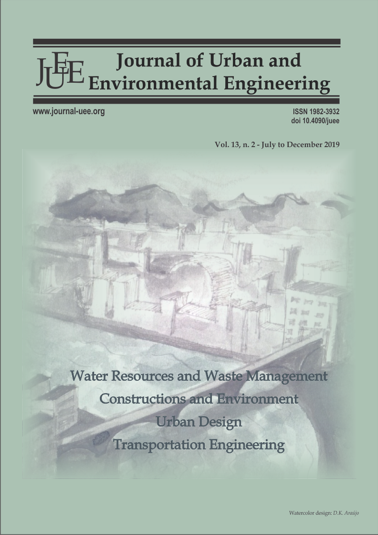INNOVATIVE PROPOSITION AND PREDICTION OF URBAN WET WEATHER WASHOFF USING SIMULATED RAINFALL
DOI:
https://doi.org/10.4090/juee.2019.v13n2.329-335Keywords:
First flush, rain duration, rain intensity, simulated rain, TSS, washoffAbstract
Washoff is an important process that describes the transportation of pollutants into water ways during the wet weather event. Washoff is a multifarious phenomenon that encapsulated other varied processes ranging from the pollutants deposition during the dry weather period (buildup), to the higher load transport at the beginning of the storm (first flush). Most of the washoff studies were localised to non-tropical regions, where the laxity to wait for dry weather period exist. However, in the tropical regions, the assurance for prolonged dry weather period is near absent, due to frequency of rainfall. This research experimented two new approaches to washoff sampling suitable for tropical regions, alongside with the traditional washoff sampling method. To obtain highly accurate data, the rainfall parameters were confined to selection by employing a very efficient rainfall simulator to gain the washoff data. The washoff of Total suspended solids (TSS) as an indicator of pollution under different simulated rainfalls was established. The result indicated higher mobilisation of the TSS in the first five minutes of rain, and disposes to a steady mobilisation rate after 40 minutes of simulated rain. The washoff percentages for the three road surfaces suggests that the rain intensity plays a more prominent role in washoff prior to the occurrence of first flush, while intense rain mobilises higher amount of TSS within shorter duration of rain. The first flush effect was quantified based on the common definitions of pollutants load-volume relationships of 20/80, 30/80, and 20/40. In all the road surfaces, at least 40% of the pollutants loads were transported in the first 20% of the runoff volumes.Downloads
Download data is not yet available.
Downloads
Published
2019-10-06
Issue
Section
Articles




